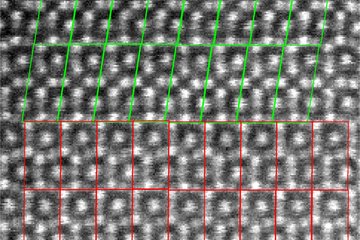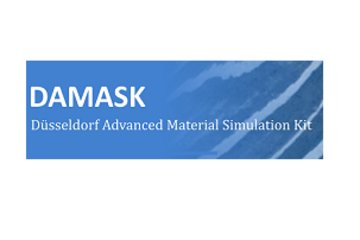All genres
521.
Talk
Revealing the dependence of chemical decoration on the role of the grain boundary hierarchy. V-APT&M 2022, Online, China (2021)
522.
Talk
Atomistic simulation study of grain boundary migration for different complexions in copper. DPG-Tagung, Virtual (2021)
523.
Talk
Toward engineered thin film metallic glasses with large mechanical properties: effect of composition and nanostructure. Seminar at Laboratoire des Sciences des Procédés et des Matériaux (LSPM), Paris Nord University, Paris, France (2021)
524.
Talk
Diffusionless congruent grain boundary phase transitions in metals: Simulation and experimental imaging. 2021 Fall Meeting of the European Materials Research
Society
, Virtual (2021)
525.
Talk
Size effect in bi-crystalline Cu micropillars with a coherent twin boundary. Euromat 2021, Virtual Conference (2021)
526.
Talk
Ultrastrong and ductile complex concentrated alloy via interstitial solid solutioning. Euromat 2021, Virtual Conference, Graz, Austria (2021)
527.
Talk
Deformation and chemical evolution in cementite (Fe3C) during small-scale tribology. European Congress and Exhibition on Advanced Materials and Processes - EUROMAT 2021, Virtual (2021)
528.
Talk
Grain boundary phases in pure and alloyed Cu: Insights from advanced STEM. Microscopy Conference 2021 Joint Meeting of Dreiländertagung & Multinational Congress on Microscopy, Virtual Meeting (2021)
529.
Talk
Congruent grain boundary phase transformations revealed by STEM in pure copper. Microscopy conference Joint Meeting of Dreiländertagungn & Multinational Congress on Microscopy MC 2021, virtual, Vienna, Austria (2021)
530.
Talk
Resolving grain boundary phase transformations in Copper by advanced STEM. Thermec 2021, Online Conference (2021)
531.
Talk
Experimental Insights in Congruent and Non-Congruent Grain Boundary Phase Transformations in Copper by Advanced STEM. International Seminars, Technion - Israel Institute of Technology (Israel), Purdue University (USA), virtual (2021)
532.
Talk
Insights in the Structure, Defects and Stability of Mo2BC Thin Films by Advanced Characterization Methods. International Conference on Metallurgical Coatings and Thin Films 2021 (ICMCTF2021), Virtual Conference (2021)
533.
Talk
Congruent and non-congruent grain boundary phase transformations in Copper studied by advanced STEM. Virtual Seminar of Institute Jozef Stefan, Ljubljana, Slovenia (2021)
534.
Talk
Hydrogen and micromechanics in ferritic alloys. Oxford Materials Colloquium, online seminar, Oxford, UK (2021)
535.
Talk
Atomistic simulation of grain boundary phases and transitions in fcc metals. DPG-Tagung, Virtual (2021)
536.
Talk
Probing the local influence of micro- and nanostructure on mechanical properties of Materials. E-MRS 2021 Spring Meeting, online (2021)
537.
Talk
Micromechanical Investigation of Cubical and Hexagonal NbCo2 Laves Phases. Indo-German Bilateral Virtual Workshop on High Performance Metallic Materials for Energy Storage and Power Generation Sector, IGSTC Virtual Workshop MATAPP 2021, online (2021)
538.
Talk
Inclinational dependence of atomic grain boundary structures in Copper. Digital Young Materials Researcher Day, RUB, virtual, Bochum, Germany (2020)
539.
Talk
Resolving grain boundary phase transformations in Copper by advanced STEM. TimeMan, online, Lille, France (2020)
540.
Talk
Micro- and Nanomechanical Testing of Materials - From Methods to Mechanical Properties. SFB 1394 Summer School, online, Aachen, Germany (2020)











